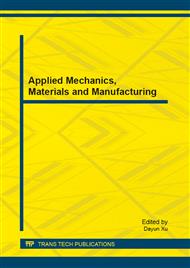p.609
p.613
p.617
p.624
p.632
p.639
p.644
p.649
p.655
Numerical Analysis on the Expanding Process of Expandable Casing and Contact Evaluation of its Threaded Connection
Abstract:
A detailed analysis of the expansion process will not only provide proper estimates for processing accuracy, but will also provide critical information needed to properly design the driving force required to perform the expansion process. Furthermore, accurate analysis of the contact of the threaded connection is necessary for estimating the sealing capacity of an expandable casing section after expansion. The 3D Finite Element Method has been used to numerically simulate the expansion process fora given expandable casing section. The principal results obtained from this numerical analysis include: 1) maximum value and distribution of equivalent plastic strain after expansion within the casing, 2) deformed casing shape, 3) maximum value and distribution of contact force at contact surface between pin thread and box thread, and 4) variation in values of the driving force of the mandrel cone during the expansion process.
Info:
Periodical:
Pages:
632-638
Citation:
Online since:
August 2013
Authors:
Keywords:
Price:
Сopyright:
© 2013 Trans Tech Publications Ltd. All Rights Reserved
Share:
Citation:


